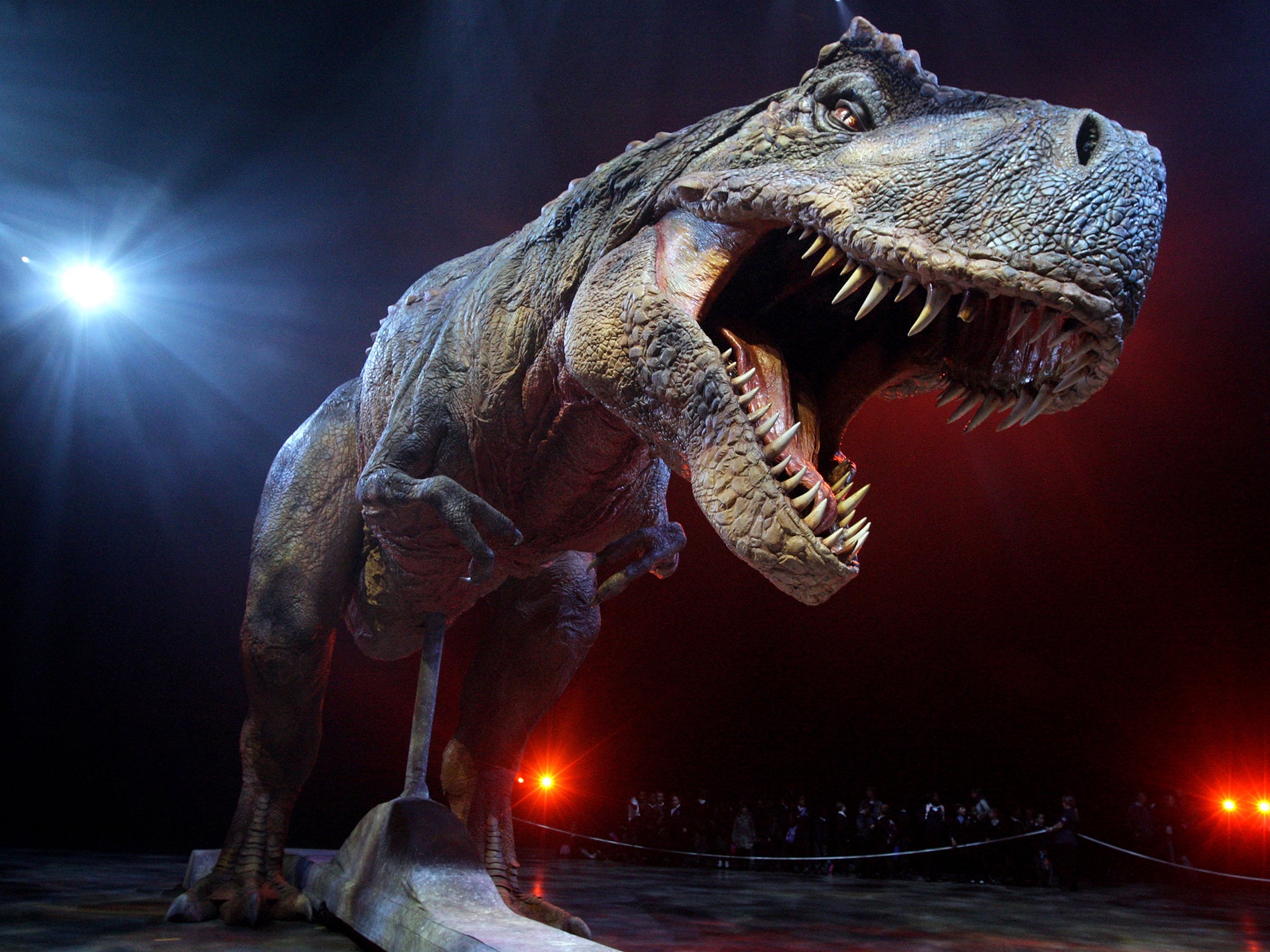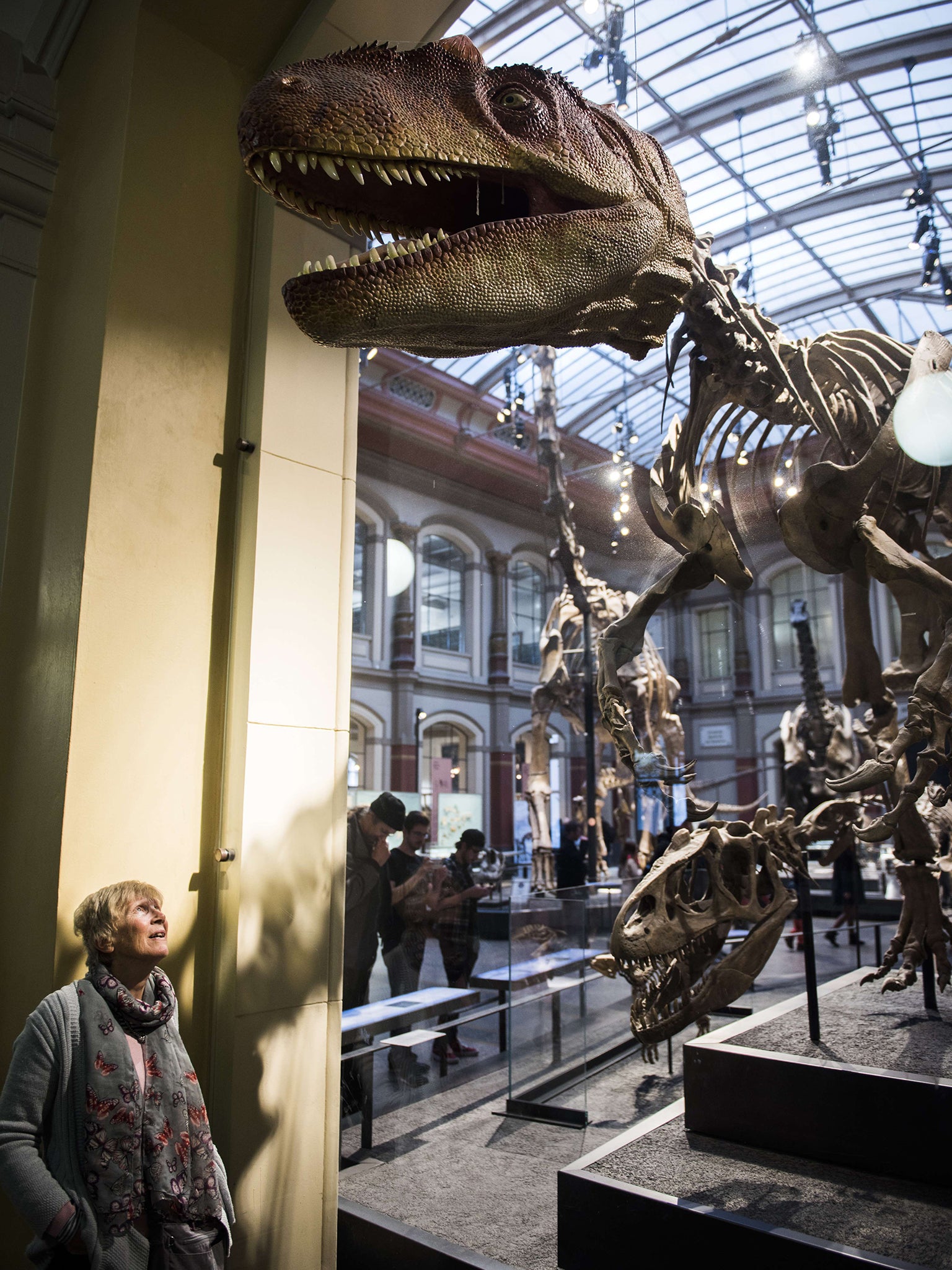T-rex could open its mouth really wide, scientists discover
The iconic giant predator could stretch its upper and lower jaws 80 degrees apart

Your support helps us to tell the story
From reproductive rights to climate change to Big Tech, The Independent is on the ground when the story is developing. Whether it's investigating the financials of Elon Musk's pro-Trump PAC or producing our latest documentary, 'The A Word', which shines a light on the American women fighting for reproductive rights, we know how important it is to parse out the facts from the messaging.
At such a critical moment in US history, we need reporters on the ground. Your donation allows us to keep sending journalists to speak to both sides of the story.
The Independent is trusted by Americans across the entire political spectrum. And unlike many other quality news outlets, we choose not to lock Americans out of our reporting and analysis with paywalls. We believe quality journalism should be available to everyone, paid for by those who can afford it.
Your support makes all the difference.It may not come as a huge surprise to anybody who has seen Jurassic Park, but scientists have discovered the Tyrannosaurus rex could open its mouth really wide.
New research revealed the T.rex could stretch its upper and lower jaws apart to an angle of 80 degrees, indicating Steven Spielberg’s depiction of the giant predator's gaping mouth was largely accurate.

The Tyrannosaurus was by no means the dinosaur whose mouth opened the widest though. The Allosaurus, a much smaller carnivore from the same ‘theropod’ group, could gape its mouth as wide as 92 degrees.
However, it could not achieve the same sustained bite force from a wide range of angles that helped its more famous relative to crunch its serrated six-inch teeth through the flesh and bone of its prey.
Herbivore dinosaurs were found to have a smaller jaw gape, reflecting scientists' knowledge of living plant-eating animal species. The tests showed the Erlikosaurus, a theropod which fed on plants, could only achieve a more restricted 49-degree jaw angle.

Lead scientist Dr Stephan Lautenschlager, from the School of Earth Studies at the University of Bristol, said: "Theropod dinosaurs, such a Tyrannosaurus rex or Allosaurus, are often depicted with widely-opened jaws, presumably to emphasise their carnivorous nature.
"Yet, up to now, no studies have actually focused on the relation between jaw musculature, feeding style and the maximal possible jaw gape.
"All muscles, including those used for closing and opening the jaw, can only stretch a certain amount before they tear. This considerably limits how wide an animal can open its jaws and therefore how and on what it can feed.
"We know from living animals that carnivores are usually capable of larger jaw gapes than herbivores, and it is interesting to see that this also appears to be the case in theropod dinosaurs."
The research, published in the journal Royal Society Open Science, was conducted using computer-generated virtual models of dinosaur jaws and by making comparisons with crocodiles and birds.
Additional reporting from Press Association
Subscribe to Independent Premium to bookmark this article
Want to bookmark your favourite articles and stories to read or reference later? Start your Independent Premium subscription today.
Join our commenting forum
Join thought-provoking conversations, follow other Independent readers and see their replies
Comments